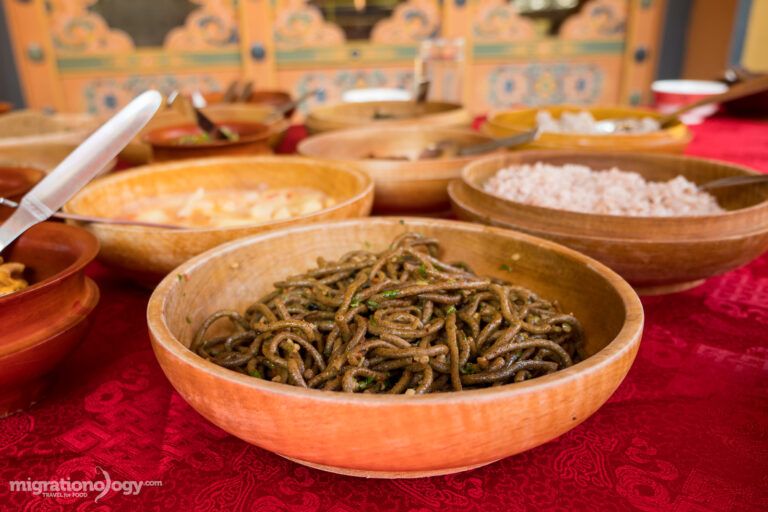Introduction: Bhutanese Cuisine
Bhutan is a small landlocked country in South Asia that is known for its rich culture and traditions. Bhutanese cuisine is a reflection of its culture, and it is heavily influenced by neighboring countries such as India, Nepal, and Tibet. The food in Bhutan is generally spicy, and it features a lot of meat, rice, vegetables, and spices. However, Bhutanese cuisine also offers a variety of vegetarian options for those who prefer to avoid meat.
Vegetarianism in Bhutan
Vegetarianism is not very common in Bhutan, as meat is an essential part of the Bhutanese diet. However, there are a significant number of people who follow a vegetarian diet due to religious or personal reasons. In Bhutan, Buddhism is the dominant religion, and many Buddhists practice vegetarianism as a way to show compassion towards animals and to lead a peaceful life.
Traditional Bhutanese Vegetarian Dishes
Bhutanese cuisine has a variety of traditional vegetarian dishes such as Ema Datshi, Kewa Datshi, and Shakam Datshi. Ema Datshi is a spicy dish made with chili peppers and cheese, while Kewa Datshi is a dish made with potatoes and cheese. Shakam Datshi is a dish made with dried beef and cheese, but it can also be made vegetarian by replacing the beef with mushrooms or tofu.
Popular Vegetarian Dishes in Bhutan
In addition to traditional vegetarian dishes, Bhutanese cuisine also offers popular vegetarian dishes such as Phaksha Paa, Jasha Maroo, and Jaju Soup. Phaksha Paa is a dish made with roasted chili, tomatoes, and dried pork, but it can also be made vegetarian by replacing the pork with tofu or mushrooms. Jasha Maroo is a dish made with chicken, but it can be made vegetarian by replacing the chicken with tofu or mushrooms. Jaju Soup is a vegetable soup that is made with potatoes, carrots, and spinach.
Vegetarian Options for Non-Vegetarian Dishes
If you are a vegetarian in Bhutan, you can still enjoy non-vegetarian dishes by requesting vegetarian options. For example, if you want to try the traditional Bhutanese dish of Phaksha Paa, you can request the dish without the pork. Similarly, you can request vegetarian options for other non-vegetarian dishes such as Jasha Maroo and Jaju Soup.
Where to Find Vegetarian Food in Bhutan
Vegetarian food can be found in most restaurants in Bhutan, especially in the capital city of Thimphu. However, it is important to note that not all restaurants offer a wide range of vegetarian options, so it is best to check ahead of time. Vegetarian food can also be found in local markets, and many street vendors sell vegetarian snacks such as momos (dumplings) and samosas.
Vegetarian Food in Bhutanese Restaurants
Most Bhutanese restaurants offer vegetarian options, and some restaurants even specialize in vegetarian cuisine. Vegetarian food in Bhutanese restaurants is generally made with fresh and local ingredients, and it is usually prepared with a lot of spices and herbs.
Conclusion: Vegetarianism in Bhutanese Culture
Vegetarianism is not a common practice in Bhutan, but it is still possible to enjoy a vegetarian diet in Bhutanese cuisine. Bhutanese cuisine offers a variety of vegetarian options, from traditional vegetarian dishes to popular vegetarian dishes. Vegetarian food can be found in most restaurants and local markets, and it is a great way to experience the flavors of Bhutanese cuisine.


